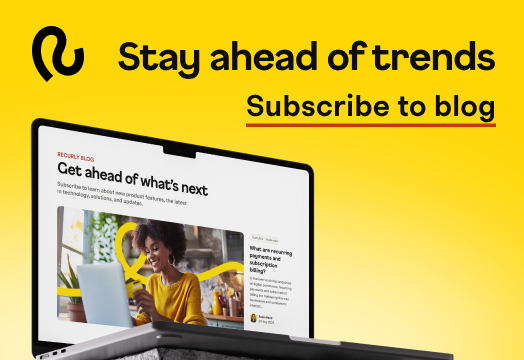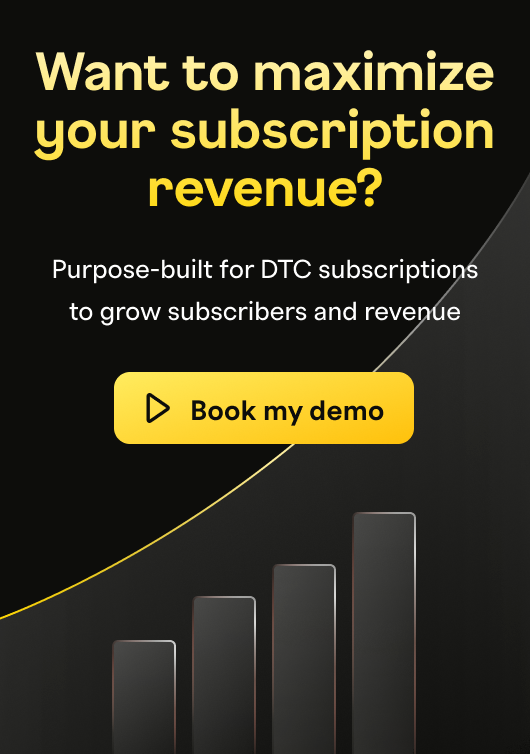What is Freemium? A Guide for Subscription Businesses

Giving away your product for free has been the backbone of such multi-billion dollar companies as Spotify, Dropbox, and Slack.
Freemium services remove initial sign-up friction by allowing users to experience products before committing to a subscription. Companies incentivize paid upgrades by offering advanced features, priority support, or additional usage limits. Freemium models with clear feature differentiation convert at higher rates than those with open-ended upgrade incentives. The benefit of this approach is that it lets businesses build large user bases and creates clear upgrade paths from free to paid plans.
However, free users consume server resources, customer support, and development costs without generating revenue, and it is a challenge to retain customers after their needs are met. These issues can make freemium services expensive to scale.
Read on to understand how freemium works, when to implement it, and how it can turn free users into a revenue stream.
What is freemium?
Freemium is a business model where a company offers basic features at no cost to the customer, and then offers additional functionality in the form of a recurring subscription fee.
Freemium services remove initial sign-up friction by allowing users to experience products before committing to a subscription. Companies incentivize paid upgrades by offering advanced features, priority support, or additional usage.
The benefit of this approach is that it lets businesses build large user bases and creates clear upgrade paths from free to paid plans.
Why is freemium used in subscription businesses?
Freemium transforms customer acquisition by shifting the burden of proof from marketing campaigns to product performance, and letting their service or tool demonstrate its capabilities directly. This model particularly suits subscription companies because it aligns with their need for long-term customer relationships rather than one-time transactions. Freemium users become familiar with workflows and build habits around the product, making them more likely to pay subscription costs when they encounter usage limits or need advanced functionality. Freemium also offers:
Faster user acquisition
Removing upfront payment requirements eliminates the primary barrier preventing potential customers from trying new products. Freemium companies can build massive user bases that traditional paid models struggle to achieve in similar timeframes.
Low but scalable conversion rates
According to an analysis of 80+ SaaS companies, the average freemium conversion rate ranges from 2-5%, but successful companies compensate through volume and higher customer lifetime values from converted users. While most SaaS companies fall into this industry standard range, Userpilot's 2024 analysis shows that exceptional performers like Spotify and Slack achieve conversion rates above 30%, demonstrating that companies with large free user bases can generate meaningful revenue even with relatively low conversion percentages.
Product validation and feedback
Large free user bases provide valuable usage data and feedback for improving subscription offerings before users pay. Companies can test features, identify user behavior patterns, and refine their product based on real usage data from thousands of users.
Word-of-mouth marketing
Satisfied free users become advocates who recommend products to others, creating organic growth for subscription businesses. This viral growth reduces reliance on paid advertising and builds trust through peer recommendations.
Multiple revenue streams from free users
Non-paying users still contribute value by viewing targeted advertisements, providing usage data for product improvements, and referring new users to the platform. Free users also serve as product evangelists, spreading awareness through social sharing and professional networks without direct marketing costs.
Digital product economics
Software and online services can serve additional free users without significant incremental expenses, making the economics viable at scale. Cloud storage, streaming services, and collaboration tools benefit from this cost structure, whereas physical products typically cannot support freemium models economically.
Higher retention after conversion
Users who convert from free to paid plans often show stronger engagement and lower churn rates compared to customers acquired through traditional marketing channels. Converting users have already established usage patterns and understand the product's value proposition before making purchase decisions.

Freemium vs free trial
Freemium models attract large subscriber bases that can stay free indefinitely, while free trials drive faster purchase decisions from qualified prospects. Free trials give users complete access to all features for a limited time, typically 7 to 30 days, to evaluate the full product experience before buying.
The choice between these approaches depends on whether:
Your product has clear feature tiers that work separately, or it needs full demonstration to show value
Your business can support ongoing free user costs, or it requires faster revenue conversion
Your target market prefers no-commitment exploration, or it responds better to time-pressured evaluation periods
Access and time limitations
Free trials provide full product access for limited time periods, while freemium offers limited features indefinitely. Free trials give users complete functionality for 7, 14, or 30 days before requiring payment, whereas freemium users access basic features permanently but must upgrade for advanced capabilities.
Ongoing cost implications
Freemium users can remain on free plans forever, creating ongoing costs for businesses that must support non-paying customers indefinitely. Free trials eliminate long-term cost burden since users either convert or lose access, making financial planning more predictable.
Conversion timing and urgency
Free trials create urgency and faster conversion decisions because users face an imminent deadline. Freemium removes time pressure, allowing users to delay upgrade decisions indefinitely, which can reduce conversion rates but may lead to more committed customers when conversions occur.
User engagement patterns
Freemium builds deeper product habits and user dependency over time as customers integrate limited functionality into daily workflows. Free trials compress the evaluation period, requiring users to assess full product value quickly without extended habit formation.
Product complexity considerations
Free trials work better for complex products that need full demonstration, while freemium suits products with clear feature tiers. Enterprise software with intricate workflows benefits from complete access during evaluation, whereas consumer applications can effectively separate basic and premium features.
How freemium functions in subscription models
Freemium operates by creating multiple user tiers within a single product ecosystem, where free users subsidize their usage through eventual conversions or alternative revenue streams.
Multiple revenue streams: Revenue comes from converted subscribers, advertising on free accounts, or data monetization
Free vs paid balance: Successful freemium requires careful balance between free value and premium incentives
Upgrade triggers: Conversion happens through usage limits, feature restrictions, or improved experiences that become necessary as users engage more deeply with the product
Financial planning: Businesses must calculate customer lifetime value against the cost of supporting free users to ensure long-term viability
Conversion automation: Most freemium companies use automated conversion prompts and targeted messaging to guide users toward paid plans
Common challenges with freemium
Freemium models create a financial problem where businesses pay to support users who might never convert to paid users.
Most users never convert to paid plans
Few freemium users upgrade to paid subscriptions, making profitability depend on large user volumes. Industry conversion rates typically range from 2-5%, meaning businesses need massive free user bases to generate meaningful revenue from the small percentage who upgrade.
Diversified revenue streams from paid tiers help subsidize the cost of free users, but that requires reaching out to users when they are receptive to messaging. This requires a tool like Recurly Engage, which keeps track of such upgrade prompts as users hit feature limits or show signs of heavy usage by messaging them when they're most likely to see value in paying.
Free users create ongoing costs
Supporting large numbers of free users creates ongoing infrastructure, customer support, and development costs without direct revenue. These expenses can quickly outpace income from converted users if companies don't carefully manage their cost structure and conversion rates.
Difficult to balance free and paid features
Determining the right mix of free and premium features requires constant testing to avoid giving away too much or too little value. Companies must provide enough free functionality to attract users while reserving compelling features for paid tiers that justify subscription costs.
Users resist paying for previously free features
Free users often resist paying for features they previously accessed at no cost, creating conversion friction. Moving features from free to paid tiers can damage user trust and lead to churn rather than conversions.
Competition can force feature additions
Markets with multiple freemium competitors can lead to feature wars that erode premium value propositions. Companies may feel pressured to add more features to free tiers to remain competitive, reducing differentiation between free and paid offerings.
Why Recurly is the best solution for freemium subscription management
Freemium businesses need billing systems that handle plan changes, proration calculations, and subscription lifecycle management without manual work. Managing transitions from free to paid plans, mid-cycle upgrades, and complex billing scenarios requires automation that traditional billing systems can't provide.
Recurly automates subscription upgrades and downgrades, processes mid-cycle changes with prorated credit calculations, and handles pausing subscriptions as an alternative to cancellation. The platform manages multiple subscription tiers, processes immediate or scheduled plan changes, provides personalized onboarding, sets up automated lifecycle emails, and provides subscription analytics to track customer behavior patterns.
Recurly Engage delivers personalized in-app prompts throughout the subscriber lifecycle, from trial conversions and feature adoption to churn prevention and upgrade opportunities to catch users when they're actively engaged with the product. This automation eliminates billing errors and reduces the operational complexity of managing mixed free and paid user bases.
Automated subscription upgrades and downgrades with prorated billing
Mid-cycle plan changes with accurate credit calculations
Subscription pausing as an alternative to cancellation
Multiple subscription tier management
Immediate or scheduled plan change processing
Subscription analytics and customer behavior tracking
Pricing experiments to test conversion strategies
Cohort analysis and revenue forecasting
Product performance tracking and optimization tools
With Recurly, you can run pricing experiments to capture every dollar and review analytics that track product performance, analyze cohorts, and forecast revenue to help freemium businesses optimize conversion rates from free to paid plans, and identify optimal conversion points to maximize revenue from their freemium models.
Book a demo for Recurly and see how it can help your subscription business grow

